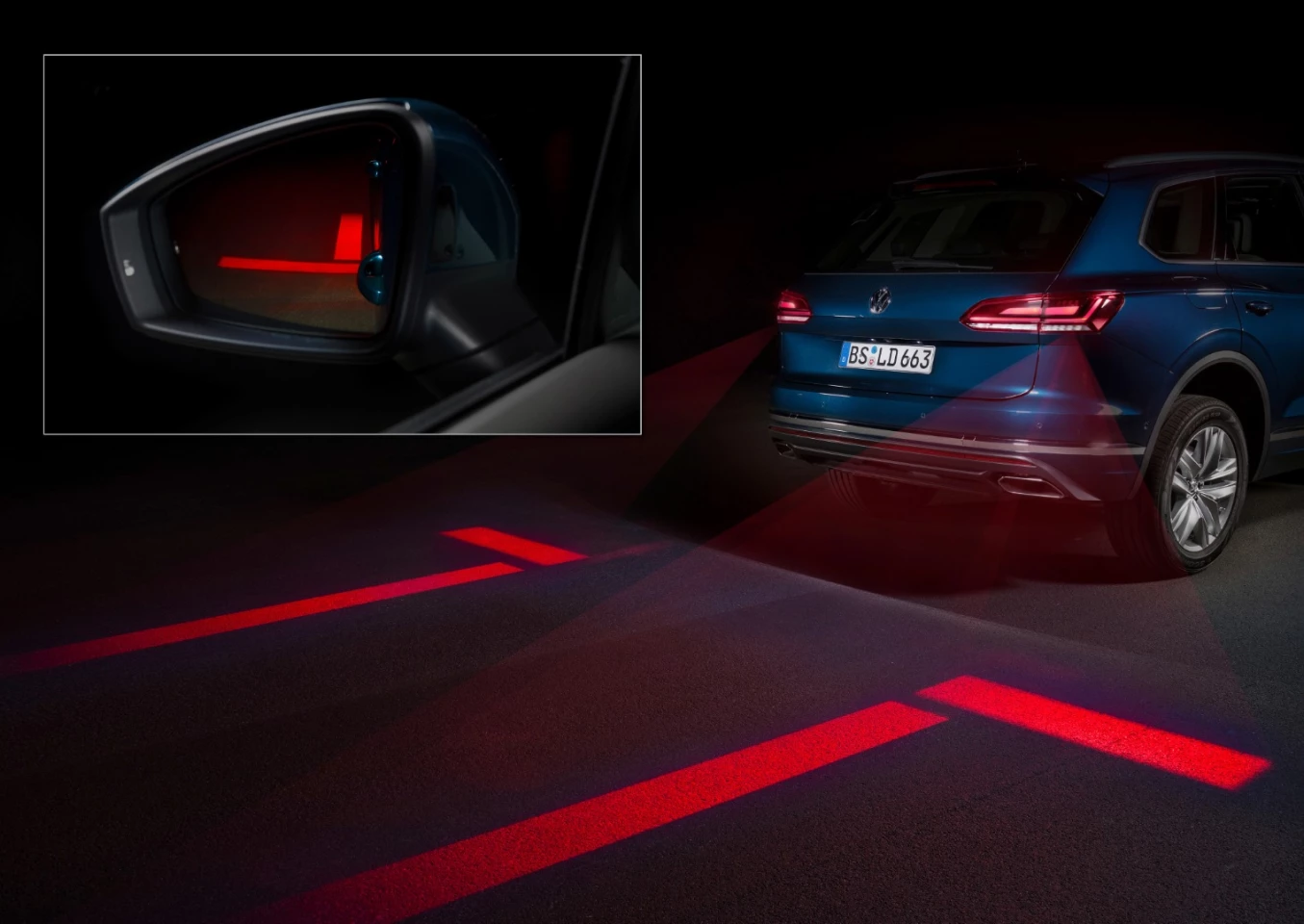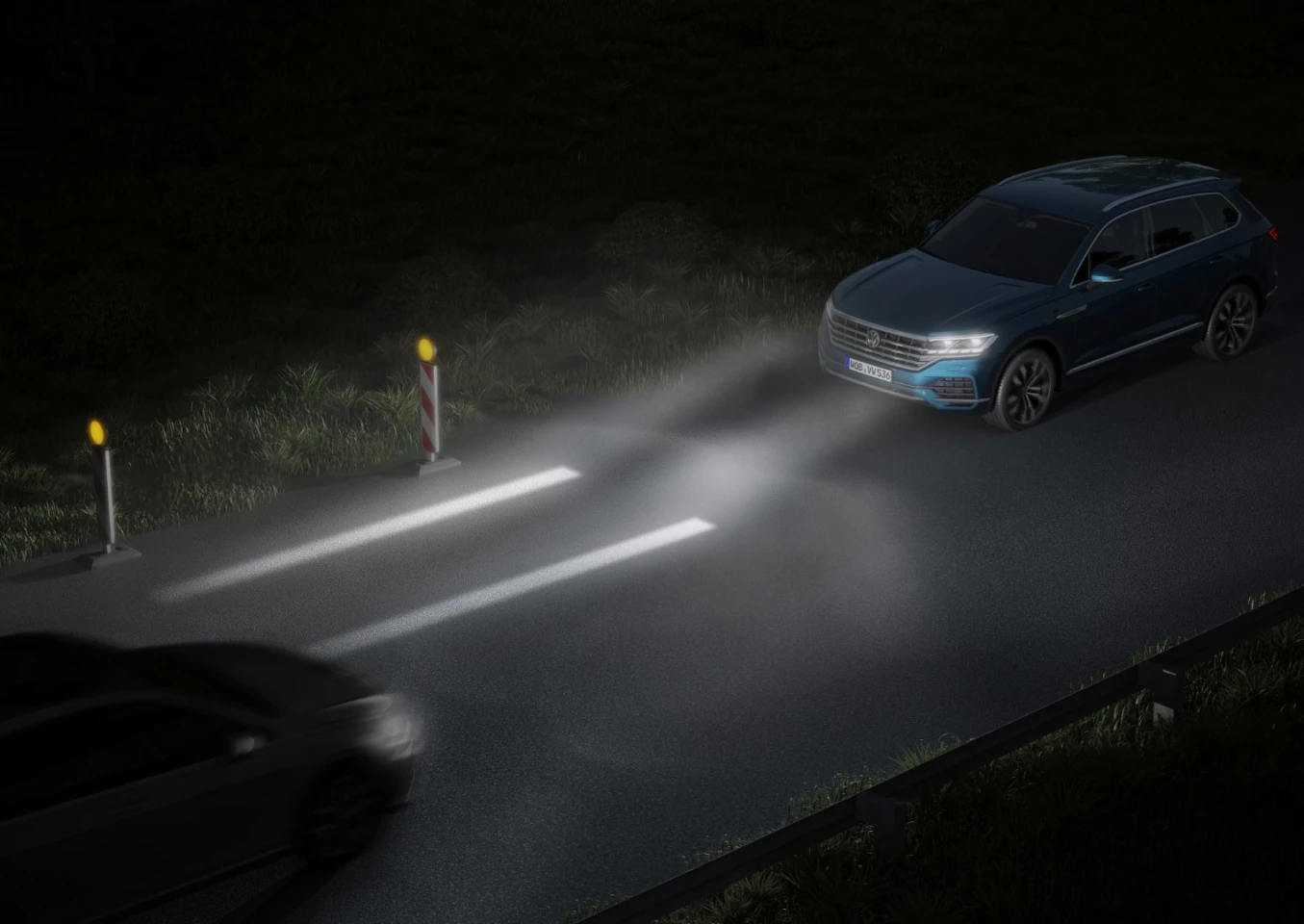Self-driving cars can't make eye contact to signal their intentions, so Volkswagen is testing several systems that turn a car into an interactive information display to project information onto the road for drivers and display interactive information to other road users.
The thinking is that as the driving duties eventually transition away from humans into the hands of cameras, sensors and algorithms, car lighting will come to serve a different purpose, more about signaling information to other drivers and pedestrians than simply letting a human driver see better in the dark.
As such, the company is designing, prototyping and testing some odd ideas for external lighting. Some of these might make their way onto production vehicles fairly soon; one, for example, projects a pair of red warning lines onto the road when a car is reversing, letting pedestrians know where the danger zone is and presumably eliminating the problem of backing out of a high-fenced driveway into the path of a cyclist on the footpath.

Another projects shapes on the road showing where a human driver's blind spot is, making it clear where's a safe spot to be seen. Another extends the indicators with bright orange arrows on the road that extend into the space you're planning to move toward.
"Optical Lane Assist" paints the road ahead with lines showing the width and trajectory of your car, bending as the steering wheel turns, to show exactly how much room you're leaving for roadworks, for example, or to give you an idea of which gaps you can fit through. They would also give oncoming cars on narrow country roads a clear idea of how much road space they've got to use, a little like those Xfire lights that cyclists can use to create their own bike lane. This is achieved using a HD micro-pixel headlight design that has up to 30,000 different light points to work with at varying intensities.

Other systems are more targeted at the transition to self-driving cars. One places large, high-definition displays on the front, back and sides of the car to communicate things to other road users, such as "yes, the car has seen you, Mr. Pedestrian" in a way that replaces the eye contact we normally rely on.
Presumably, such a system could also be set to show when an autonomous car has decided to give way, eliminating all doubt about whether you're clear to turn in front of it or not. We can imagine human drivers would enjoy the ability to send these kinds of clearly articulated messages to other road users, too, albeit of a different and less polite nature.

In order to push this sort of tech forward, Volkswagen has opened a "Center of Lighting Excellence" at its Wolfsburg plant outside Hanover in Germany, complete with a 100 x 15 x 5-meter (328 x 49 x 16-ft) light testing range big enough to test these lighting prototypes in a bunch of different simulated conditions.
Source: Volkswagen















